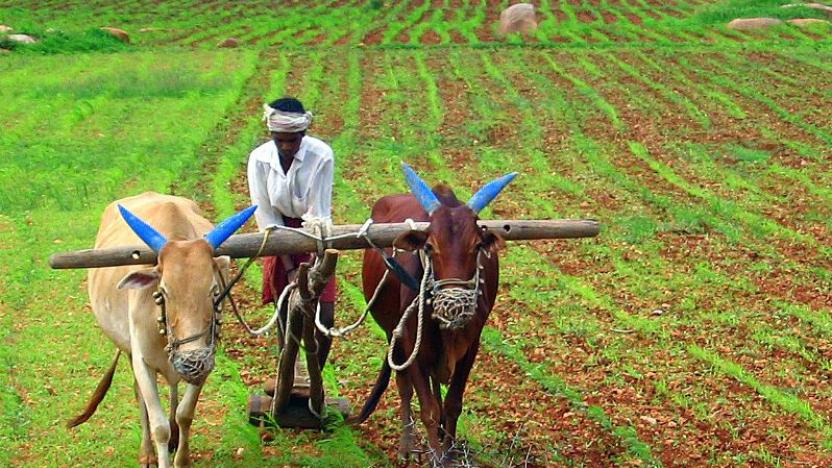
Why the small Indian farmer relies more on wages than crop income

More than a third of income of small and marginal farmers comes from daily wages, official data released by the Ministry of Statistics and Program Implementation has revealed.
Essentially, the data suggests that dependency of small farmers on daily wages has increased and its share has now become bigger than their crop income.
Marginal farmers are those who have landholdings of at least half an acre to two-and-a-half acre. Small farmers are those who have landholding of up to five acres, while those having land above five acres fall under the category of medium and large farmers.
In some cases – farmers with landholding of less than a hectare – the share of the wage income is more than half of their total income. It means they are now wage labourers than farmers. For farmers with landholding up to one acre, more than 75 per cent of income has come from wages and animal-related income, while only about 15 per cent of income is part of their crop income, according to the data.
The small farmers – those with land of up to five acres – are also largely dependent on wage and non-farm income than the crop profit. The data shows that almost 30 to 50 per cent of their income has come from wages, while their crop income forms up to 50 per cent share of the net income.
Wages becoming primary income source for agricultural households
Currently, in the context of India, wage income accounts for over one-third share of the net income of farming households. Meanwhile, farming of animals is giving them nearly 15 per cent of their income while crop production income forms another one-third share, according to National Sample Survey (NSS) data. The remaining income comes from non-farming businesses or leasing of land, but its share in overall income is marginal.
The statistics further show that farmers from Jharkhand and Kerala are earning almost 60 per cent of their income from wages. This is followed by West Bengal (55 per cent wage income) and Tamil Nadu (54.5 per cent wage income). A total of ten states have shown over 50 per cent dependency of farmers on wage income, as per the data.
Farmers least dependent on wage income are from Arunachal Pradesh (15.5 per cent wage income) and Punjab (22.4 per cent wage income).
The data shows an increasing dependency on wages than crop or other farming-related businesses. In the case of marginal farmers, they have already become wage-earners while smaller farmers too are on the brink of becoming daily-wagers, shows the data.
Ravishankar Mantha, Founder & CEO of Agrisk Data Analytics, while decoding the data said: “Doing anything under 2-3 acres is uneconomical. So, what these farmers do is they lease their own land and work on their own land as labourers, as well as on other farms. It’s a two-way income for them. In a way, it’s good economics.”
The other case here could be their own land is not suitable for agriculture or there is a scarcity of resources. So, they choose to work on wage income. “The farmers in the second case are the ones in trouble,” added Mantha.
He further asserted: “Just these numbers are not enough to make sense of the situation. One has to go on the ground and see why they (farmers) are turning to wages.”
The ground reality might show many reasons and explanations as to why Indian farmers are choosing to be wage-earners. But data confirms one thing – that dependency on wage income has increased among small and marginal farmers.
How has landholding changed over the years?
The number of marginal farmers has increased from 69.6 per cent of total farmers in 2003 to 76.5 per cent in 2019, according to the NSS report. The number of small farmers has decreased to 9.3 per cent from 10.8 per cent for the same period. These changes suggest that splitting of land is pushing more farmers into marginal categories. Also, the number of all other categories of farmers (those with landholding of 4 acres or more) has declined over these years.
Looking at the share of land possessed by various farmers, the data reveals that larger farmers have lost more land while small and marginal category farmers have gained at the same time. Currently, about one-third (or 34.5 per cent) of the total farming land in the country is owned by marginal farmers. Their share was just 23 per cent in 2003.
On the other hand, large farmers earlier held 11.6 per cent of the total land which has come down to a mere 3.9 per cent, according to the latest figures. Small farmers have also gained to become nearly one-fourth landowners.
Note: All data has been referred from the report titled ‘Situation Assessment of Agricultural Households and Land and Livestock Holdings of Households in Rural India, 2019’, published by the Ministry of Statistics and Program Implementation.
Also read: The politics behind the Lakhimpur violence and its huge cost

